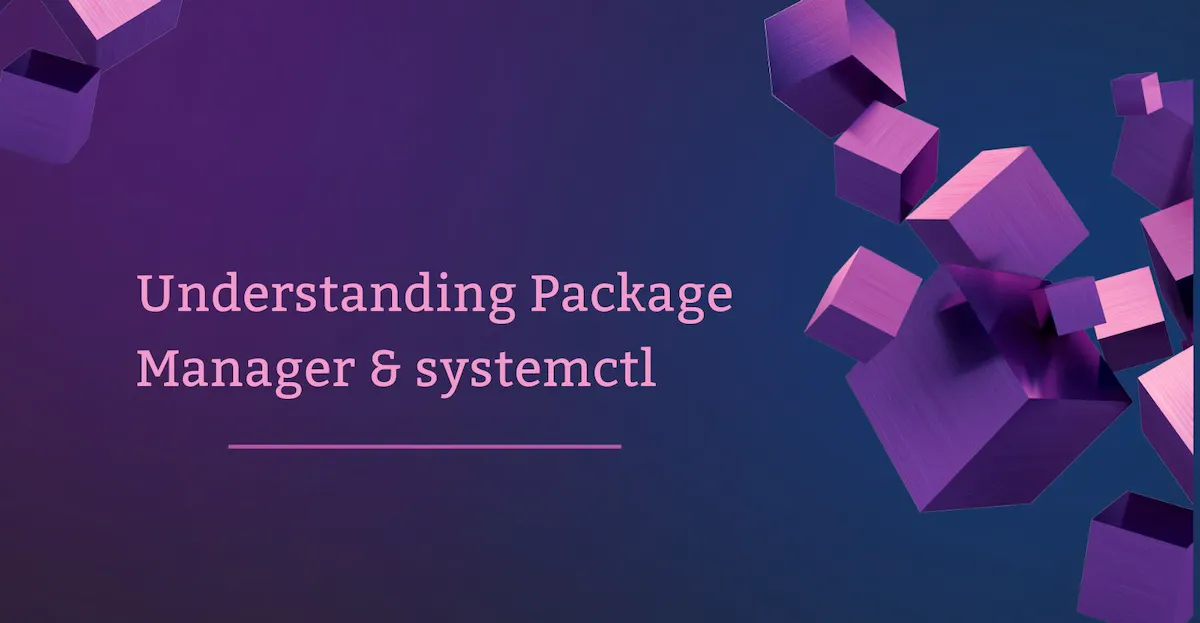Day 7 - Understanding package manager and systemctl
 Rahul Gupta
Rahul GuptaTable of contents

Introduction
In the world of Linux, managing software installation, removal, and updates can be a breeze thanks to package managers. These tools streamline the process, allowing users to effortlessly handle software packages with just a few commands. Additionally, systemd and its companion systemctl provide powerful tools for managing system services. In this guide, we'll explore the basics of package managers, demonstrate how to install Docker and Jenkins using package managers on Ubuntu and CentOS, and delve into the functionalities of systemctl.
Understanding Package Managers
A package manager is essentially a toolkit that simplifies software management on Linux systems. It enables users to perform various tasks such as installing, removing, upgrading, and configuring software packages. Whether you prefer a graphical interface or the command line, package managers offer versatility in how you interact with your system's software ecosystem.
What is a Package?
Before diving into package managers, let's grasp the concept of a package. In simple terms, a package refers to an application or software component. It could be anything from a graphical application to a command-line tool or even a software library that other programs rely on. Packages are typically archive files containing the necessary binaries, configuration files, and sometimes information about dependencies.
Different Types of Package Managers
Package managers vary based on the packaging system employed by the distribution. For instance, the RPM packaging system utilizes Yum and DNF package managers, while DEB-based distributions like Ubuntu employ apt-get and aptitude. Understanding which package manager your distribution uses is crucial for efficient software management.
Installing Docker and Jenkins using Package Managers
Let's walk through the steps to install Docker and Jenkins using package managers on Ubuntu and CentOS.
Ubuntu:
Docker Installation:
sudo apt-get update sudo apt-get install docker.ioJenkins Installation:
sudo apt-get install jenkins
CentOS:
Docker Installation:
sudo yum install dockerJenkins Installation:
sudo yum install jenkins
Understanding systemctl and systemd
systemctl is a command-line utility that allows users to examine and control the state of the systemd system and service manager. systemd serves as the system and service manager for Unix-like operating systems, providing features such as service management, logging, and process supervision.
Exploring systemctl Commands
To check the status of Docker service:
systemctl status docker
To stop the Jenkins service and view the status before and after:
sudo systemctl stop jenkins
systemctl status jenkins
Comparing systemctl with the service Command
systemctl provides a modernized approach to managing services compared to the traditional service command. While both can be used to control services, systemctl offers additional features and better integration with systemd.
For example:
systemctl status docker provides detailed information about the Docker service's status, including logs and dependencies.
service docker status offers a more basic status report without detailed information.
Conclusion
In conclusion, mastering package managers and systemctl can greatly enhance your Linux experience. These tools empower users to efficiently manage software packages and system services, contributing to a smoother and more productive workflow. Whether you're a beginner or a seasoned Linux enthusiast, understanding these fundamental tools is essential for effective system administration.
Thank you for reading our DevOps blog post. We hope you found it informative and helpful. If you have any questions or feedback, please don't hesitate to contact us.
I hope this helps!
Happy Learning✨
Subscribe to my newsletter
Read articles from Rahul Gupta directly inside your inbox. Subscribe to the newsletter, and don't miss out.
Written by

Rahul Gupta
Rahul Gupta
Hey there! 👋 I'm Rahul Gupta, a DevOps Engineer passionate about all things AWS DevOps Technology. Currently, on a learning adventure, I'm here to share my journey and Blogs in the world of cloud and DevOps. 🛠️ My focus? Making sense of AWS services, improving CI/CD, and diving into infrastructure as code. Whether you're fellow interns or curious enthusiasts, let's grow together in the vibrant DevOps space. 🌐 Connect with me for friendly chats, shared experiences, and learning moments. Here's to embracing the learning curve and thriving in the exciting world of AWS DevOps Technology!